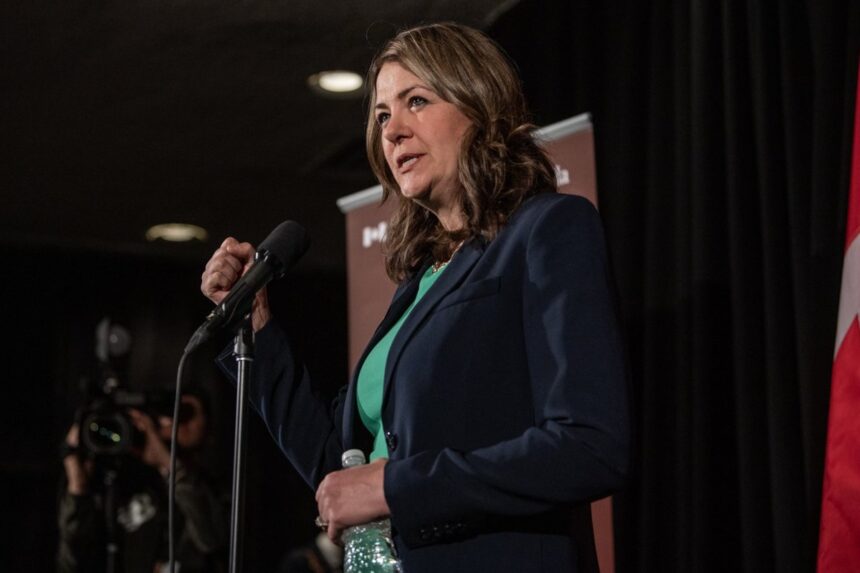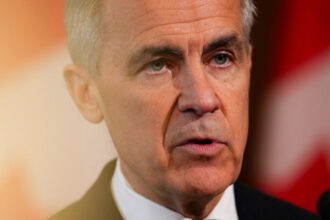A brewing controversy has erupted across Alberta as health care unions mount a vigorous opposition campaign against the provincial government’s proposed restriction of free COVID-19 vaccines. The United Nurses of Alberta, representing over 30,000 healthcare workers, has taken the lead in challenging what they describe as a potentially dangerous policy pivot that could undermine public health safeguards.
“Limiting access to free COVID-19 vaccines represents a fundamental shift away from evidence-based public health policy,” said Jane Thompson, president of the United Nurses of Alberta, during a press conference in Edmonton yesterday. “We’re witnessing a concerning pattern of decisions that prioritize short-term budget considerations over long-term population health.”
The provincial government announced last week that beginning September 1, free COVID-19 vaccines would only be available to Albertans deemed high-risk, including seniors over 65, immunocompromised individuals, and residents of long-term care facilities. All other Albertans would need to pay approximately $75 per dose at local pharmacies.
Health Minister Colin Armstrong defended the policy change as “fiscally responsible” and aligned with the province’s approach to other vaccine programs. “COVID-19 has transitioned from a pandemic to an endemic disease,” Armstrong stated. “Our approach must evolve accordingly, directing public resources toward those most vulnerable while allowing others to make personal health decisions.”
According to CO24 Health analysis, Alberta would become the first province to significantly restrict free COVID-19 vaccine access, though similar discussions are reportedly underway in other jurisdictions facing budget constraints.
Medical experts have expressed mixed reactions. Dr. Maryam Singh, epidemiologist at the University of Calgary, warned about potential consequences: “Creating financial barriers to vaccination typically reduces uptake rates across all demographics. Even modest fees can dramatically decrease participation, particularly among lower-income populations.”
The Alberta Medical Association has urged caution, noting that while COVID-19 severity has decreased, the virus continues to cause significant healthcare system strain. Last winter, Alberta hospitals reported occupancy rates exceeding 110% during respiratory virus season, with COVID-19 patients representing approximately 22% of admissions.
Documents obtained through freedom of information requests suggest the policy could save the province approximately $23 million annually. Critics argue these savings would likely be offset by increased healthcare costs resulting from preventable illnesses and hospitalizations.
The Health Sciences Association of Alberta has joined the nurses’ union in opposition, launching a public awareness campaign highlighting potential consequences. “When we create two-tiered access to preventative care, we inevitably create two-tiered health outcomes,” said Martin Ramirez, the association’s spokesperson. “Public health should never be determined by ability to pay.”
Community advocates have raised particular concerns about impacts on working families, newcomers to Canada, and individuals with chronic conditions who don’t meet the high-risk criteria but remain vulnerable to severe outcomes.
The provincial government maintains that pharmacies will be encouraged to establish compassionate pricing programs, though no formal requirements have been announced. Public health units will retain limited supplies for extraordinary circumstances, but details regarding qualifying situations remain vague.
As CO24 Canada reported last month, national health authorities continue to recommend COVID-19 vaccination as an important preventative measure, especially before periods of increased transmission typically occurring in fall and winter months.
The policy announcement comes amid declining vaccination rates across Canada. In Alberta, only 38% of eligible residents received updated COVID-19 boosters during the 2023-2024 season, down from 62% during the previous year.
As this contentious debate unfolds, Albertans are left wondering: in our evolving approach to public health, where should we draw the line between fiscal responsibility and ensuring equitable access to preventative care that benefits both individuals and the broader community?











